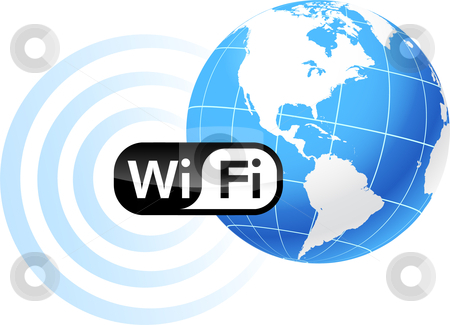WiFi should be quite easy to understand. It is a wireless network, where computers and other devices can connect without the use of cables and directed beams, like infrared. Any laptop, mobile device and desktop with WiFi card installed should be able to access the wireless network until up to 60 meters away. However, devices should be able to obtain good access in a distance of about 30 meters. The access point should be known as the wireless hotspot. Unlike typical radio signals, WiFi is able to accommodate much larger data and it operates at 2.4GHz band. The technology is based on different modulation standards, such as CCK and OFDM.
Due to its high frequency bands and sophisticated modulation techniques, WiFi technology is able to provide a huge amount of data every second. As an example, the more common 802.11g standard could transfer up to 54 megabit per second or roughly one MP3 file at about 6MB every second. The development of WiFi technology is aimed to increase productivity and enhance the convenient that portable communications and computing systems have ushered in. In present day’s scenario, it is all about increasing the overall productivity. Busy professionals typically bring with them tablets, smartphones, laptops and other WiFi-capable gadgets that can support the technology whenever they go.

Overall, WiFi should be a cost-effective, hassle-free and quick way of deploying our devices into a network. It allows for much greater flexibility possible. The WiFi-enabled environment should help workers to interact with their co-workers and clients more effortlessly. They will be able to stay connected much longer and gain so many other benefits. Here are benefits we could get from WiFi technology:
- Fast performance: WiFi is a fast wireless technology and in some ways, it is even faster than the typical DSL connections. This could be a huge advantage for home and business users who seek to get something more from their money. The high performance should be very useful when we are on the move. Consequently, we should be aware of the possibility for enhanced productivity.
- More convenience: WiFi is all about convenience from wherever we are. We should be able to connect to the network within the range of any base station. Thus, it is possible for workers to move about with any WiFi-enabled gadgets to the conference room or bedroom. It should be possible to access our company’s wireless network from our working areas, cafeteria, porch and other spots. Hotspots should also be available in public areas, such as convention centers, shopping malls, hotels, associate’s office and others. They typically have a WiFi network that can be used for free or subscription. It should be cost effective and faster for any company to migrate from wired connection to a wireless network.
- WiFi is Ubiquitous: At the moment, the WiFi technology has been heavily commercialized. So, it is nearly impossible to find new devices that don’t have such a connectivity. Any smartphones, laptops, tablets and even smartwatches already have built-in WiFi support. Further, regardless of the brand, WiFi-certified gadgets should be properly interoperable with one another.


























